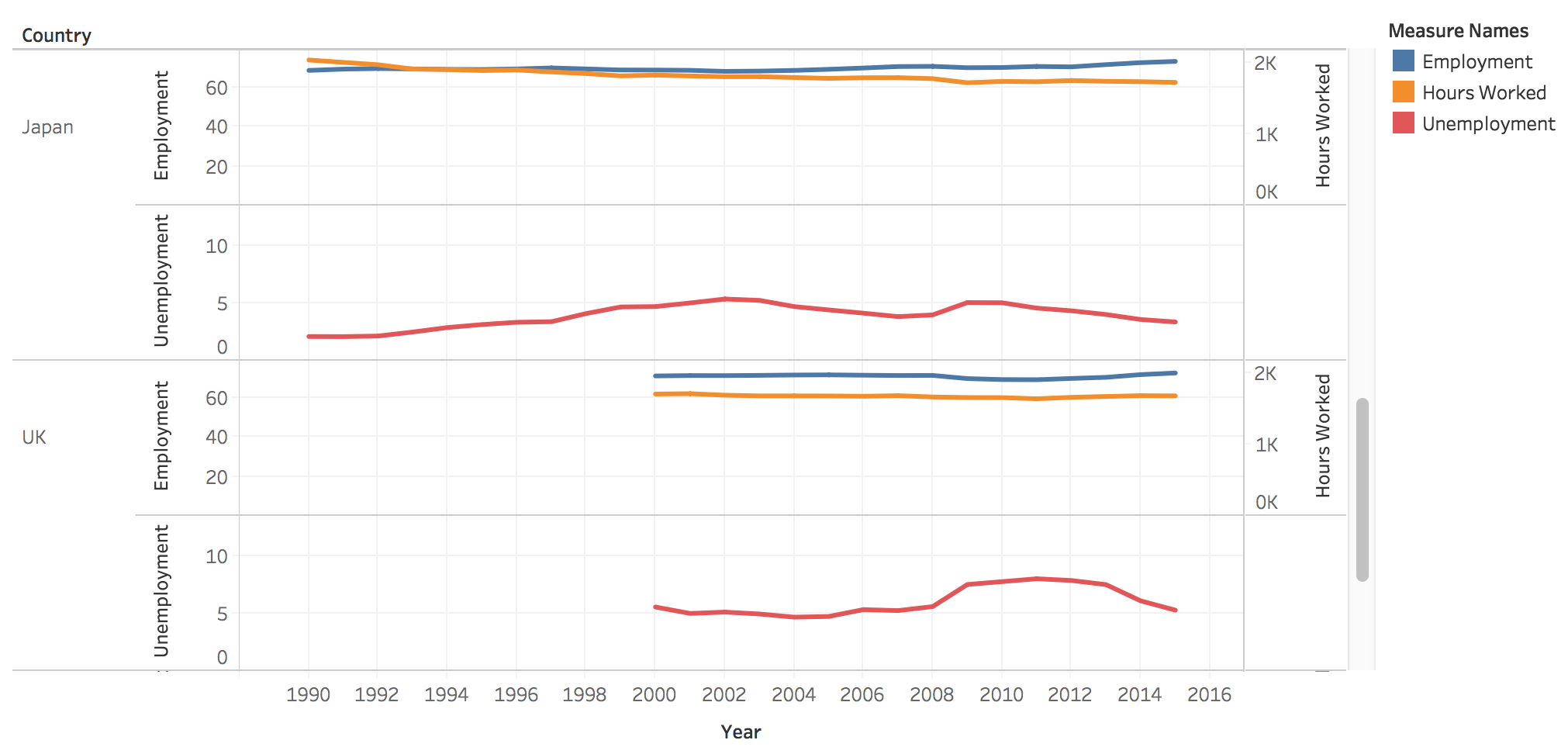This week, I wanted to examine data to see if there was a trend with average hours worked and employment, as well as unemployment. We would expect that as employment increases, so would hours worked. I took data from the OECD from the G7 members, Canada, France, Germany, Italy, Japan, the UK, and the US. seven of the major advanced economies in the world, Here are the results.
So far, France follows the trend we would expect; employment and hours worked are mostly parallel. Canada also mostly follows this, but we can see a slight trend where employment has been increasing, but hours worked has been falling.
Germany follows the expected trend with unemployment an employment, but even as employment has increased, average working hours has decreased. In Italy, hours worked was falling, and employment was increasing, but the trends appear to be converging to what we would expect.
Japan’s employment has increased, yet hours worked has fallen a little relative to the employment rate. The UK follows the mostly expected trend between employment and unemployment, and employment and hours worked.
Interestingly, in the United States, while unemployment has dropped, employment has yet to recover. This may be because some of the unemployed have stopped searching for work. Hours worked hasn’t dropped either, which is odd to to the decrease in employment, suggesting those still working are working more.
It seems that in Canada, Germany, and Japan, are working less, despite growing employment, suggesting that those working are working less. This maybe due to more part-time workers, or cultural factors. Canada and Germany tend to work shorter weeks than the United States. Japan is also known for its long work hours, yet employment has risen, while work hours have been declining.
Unfortunately, many countries from the OECD don’t have data that goes back much further than the 90’s or even the 2000’s (looking at you Europe). More data would be necessary to evaluate overall employment trends.
Data Sources: Employment Rate, Unemployment Rate, Hours Worked



